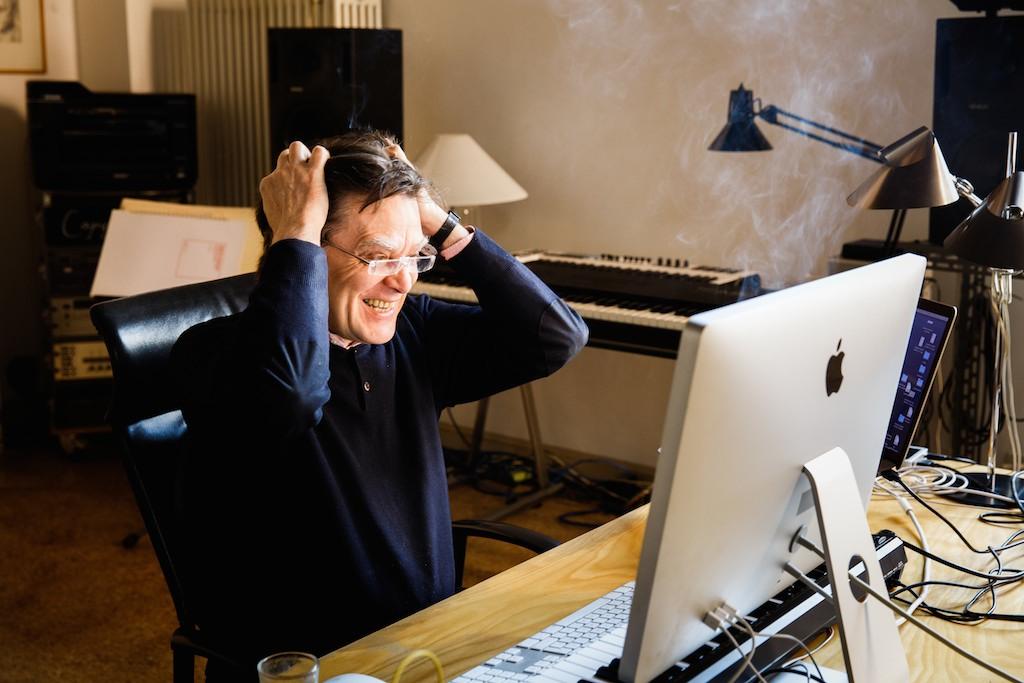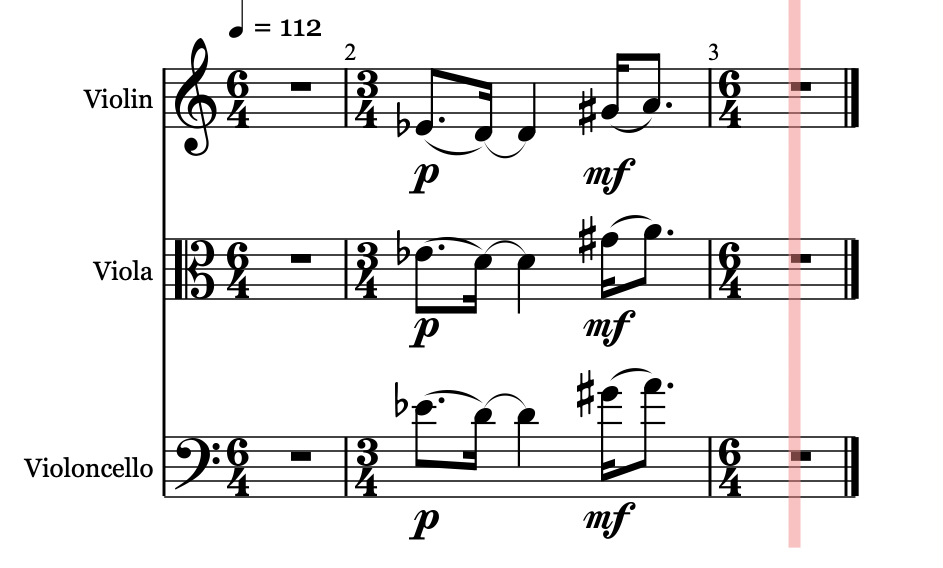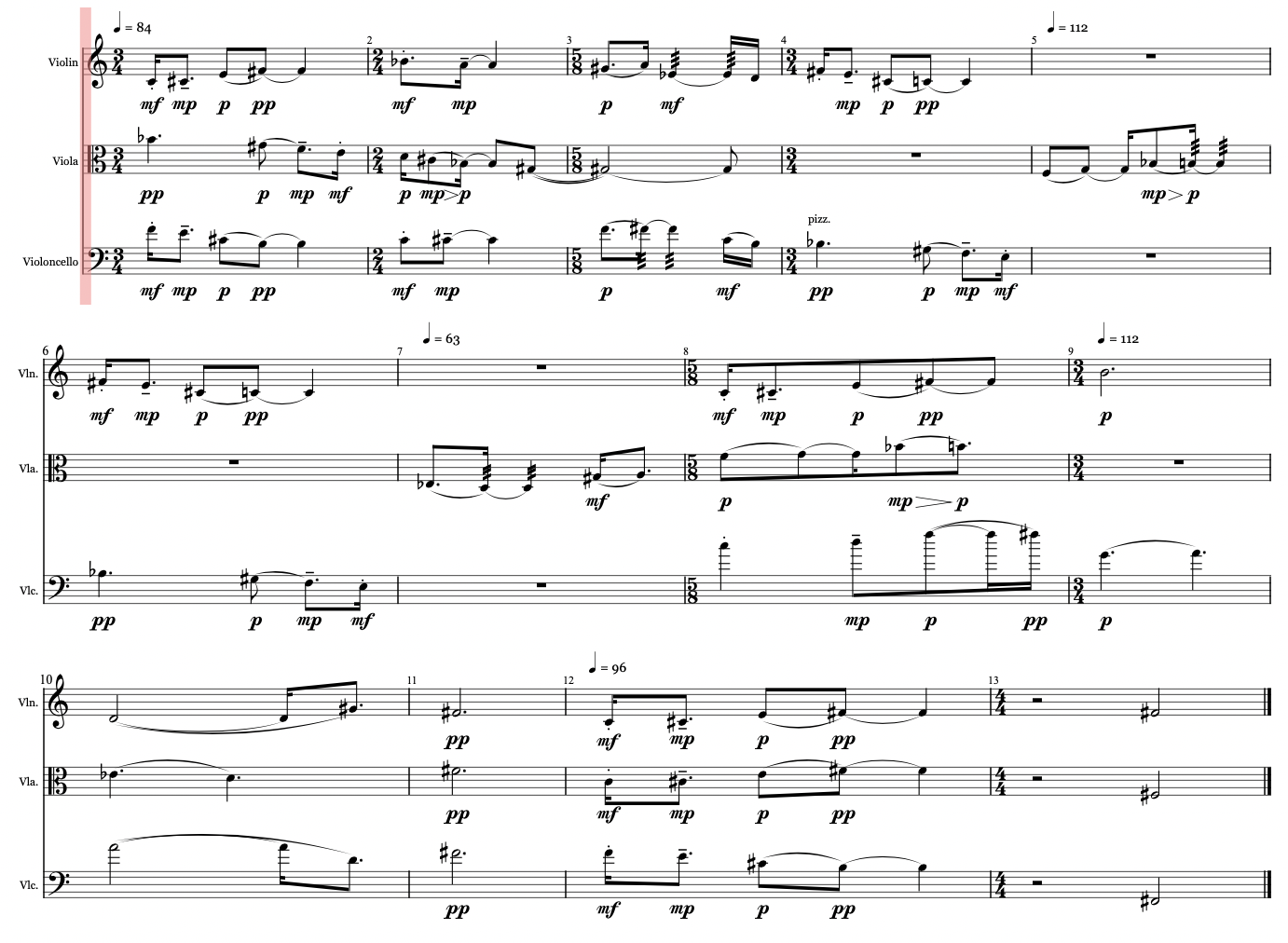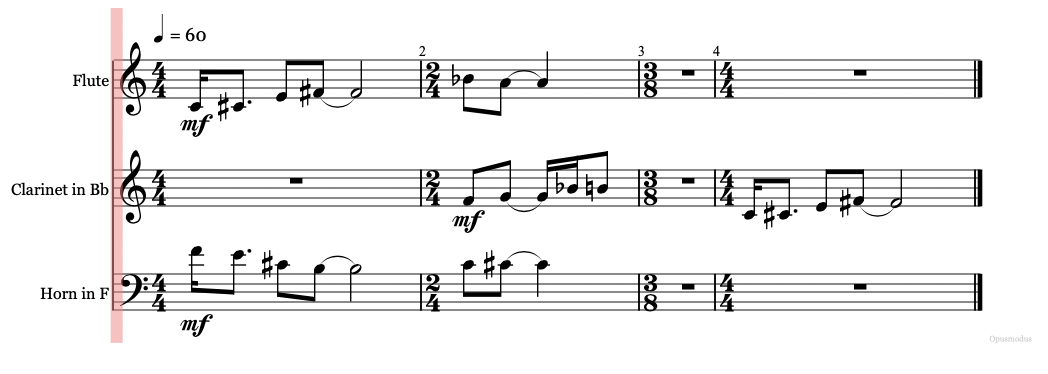-
Posts
2,889 -
Joined
-
Last visited
Contact Methods
- Website URL
Profile Information
-
Gender
Male
Recent Profile Visitors
-

fixed Further Counterpoint questions
opmo replied to AndreOktave's topic in Support & Troubleshooting
(setf pattern '(q. c4 e e4 q g4 b4)) (setf dictum '((1 - 1) :extend (- - s) :span 8/4 :methods (la2 - (la2 ra t-12)))) (counterpoint (list pattern) dictum) -

fixed Further Counterpoint questions
opmo replied to AndreOktave's topic in Support & Troubleshooting
(setf pattern '(q c4 e4 g4 b4)) (setf dictum '((1 - 1) :span 6/4 :methods (la2 - (la2 t-12 r)))) (counterpoint (list pattern) dictum) -

fixed Further Counterpoint questions
opmo replied to AndreOktave's topic in Support & Troubleshooting
:extend s means adding rest at the beginning if the span is lager then the given pattern. The la2 will double the rests. Nothing wrong with your code and with the result. To see how all this is work I suggest to make a very simple pattern and see how all this is working. (setf pattern '(q c4 e4 g4 b4)) (setf dictum1 '((1 - 1) :extend s :span 6/4 :methods (la2 - (la2 ra t-12)))) (setf dictum2 '((1 - 1) :extend e :span 6/4 :methods (la2 - (la2 ra t-12)))) (setf dictum3 '((1 - 1) :extend s :span 6/4 :methods (la2 - t-12))) (setf dictum4 '((1 - 1) :span 6/4 :methods (la2 - t-12))) (counterpoint (list pattern) dictum1) => (((-q - - - h c4 mf)) ((-q - - - - -)) ((h b3 mf g3 e3))) (counterpoint (list pattern) dictum2) => (((h c4 mf e4 g4)) ((-q - - - - -)) ((-q - - - h b3 mf))) (counterpoint (list pattern) dictum3) => (((-q - - - h c4 mf)) ((-q - - - - -)) ((-q - q c3 mf e3 g3 b3))) (counterpoint (list pattern) dictum4) => (((h c4 mf e4 g4)) ((-q - - - - -)) ((q c3 mf e3 g3 b3 -q -))) -

fixed Further Counterpoint questions
opmo replied to AndreOktave's topic in Support & Troubleshooting
The example of your previous score is correct. Let's check the expression here: #|31|# ((2 - 2) :span 6/4 :methods ((la2 ra) - (la2 ra t-12)) :tempo 112) (setf pat2 '(e f4 p leg e. g4 def e bb4 mp> leg qs b4 def)) (setf 1-step (fit-to-span 6/4 pat2)) => (e f4 p leg e. g4 def e bb4 mp> leg qs b4 p def -h.) (setf 2-step (unfold 'om '(la2 ra) 1-step)) => (-w. he b4 p def q bb4 mp> leg q. g4 p def q f4 leg) (length-span 6/4 2-step) => (-w.) As you can see you need to understand the process of your structure. The (ra) is gen-retrograde, this is why you get (-w) in the first and third voice. -

fixed Further Counterpoint questions
opmo replied to AndreOktave's topic in Support & Troubleshooting
#|31|# ((2 - 2) :extend s :span 6/4 :methods ((la2 ra) - (la2 ra t-12)) :tempo 112) #|32|# ((3 3 3) :extend s :span 3/4 :methods (- - - )) #|33|# ((- 2 - ) :extend s :span 6/4 :methods ((ra la2) (ra la2 ) (ra la2 t-12 )):tempo 112))) Just doing this without testing, but I think this is what you need to do. -
opmo started following Counterpoint Question , Opusmodus cannot recall my user function from userfunction.lisp after upgrading , Further Counterpoint questions and 2 others
-

fixed Further Counterpoint questions
opmo replied to AndreOktave's topic in Support & Troubleshooting
Update 3.0.29235 fixed the pedal (*) span. -

fixed Further Counterpoint questions
opmo replied to AndreOktave's topic in Support & Troubleshooting
If I make the adjustment to the (*) we get: The SPAN is the master and if not given the longest voice is the master, what ever the augmentation is. If you want true expansion of the augmentation then you need to change (if given) or add a span value (times 2) - this is why there is a span in the counterpoint function. You cound create a patterns before with the augmentation this way you would get what you are looking for without playing with the span. -

fixed Further Counterpoint questions
opmo replied to AndreOktave's topic in Support & Troubleshooting
Looks like the problem here is the pedal notation (*). Will check. -

fixed Further Counterpoint questions
opmo replied to AndreOktave's topic in Support & Troubleshooting
You use in the global methods augmentation, therefore you are changing the size of the bars. The global methods are not design for augmentation, with other words you should not use aug in globals. The good news is I can make the globals work the way you expect and preserve the original or the given span. Note: 1) Not correct: (setf seq1 '(s c4 mf stacc e. cs4 mp ten+def e e4 p leg q. fs4 pp def)) (setf seq2 '(e f4 p leg e. g4 def e bb4 mp> leg qs b4 def)) (setf seq3 '(e. eb4 p leg qs d4 def s gs4 mf leg e. a4 def)) should be: (setf seq1 '((s c4 mf stacc e. cs4 mp ten+def e e4 p leg q. fs4 pp def))) (setf seq2 '((e f4 p leg e. g4 def e bb4 mp> leg qs b4 def))) (setf seq3 '((e. eb4 p leg qs d4 def s gs4 mf leg e. a4 def))) 2) Not correct, you don't have any sequence of sequences: #|11|# ((1 1 1) :sequence (1 2 3) :span nil :methods ((ra la2) (ra la2) (ra la2)):tempo 112)) should be: #|11|# ((1 1 1) :span nil :methods ((ra la2) (ra la2) (ra la2)):tempo 112)) I would advise you to take some lessons with Stephane about the counterpoint. -
(progn (compile-score '((<name> :start 1 :end 90))) (audition-musicxml-last-score) ) or (display-musicxml (compile-score '((<name> :start 1 :end 90)) :output :musicxml)) You don't need to use compile-score, you could add the :start 1 and :end 90 into the def-score: (def-score name (:key-signature 'chromatic :time-signature ’(4 4) :tempo 60 :start 1 :end 90 :layout (piano-layout 'rhand 'lhand)) (rhand :omn rh :port 0 :channel 1 :sound 'gm :program 'acoustic-grand-piano) (lhand :omn lh))
-

resolved Bar numbers for each bar in ps?
opmo replied to AndreOktave's topic in Support & Troubleshooting
-
The given span is the master, therefore this is a bug - well spotted. This only happens with length augmentation. This is fix in 3.0.29233.
-
 Jorgalad reacted to a post in a topic:
Opusmodus 3.0.29232 Update
Jorgalad reacted to a post in a topic:
Opusmodus 3.0.29232 Update
-
opmo started following The Opusmodus Studio - Everything I didn't know I needed
-
 lviklund reacted to a post in a topic:
Opusmodus 3.0.29232 Update
lviklund reacted to a post in a topic:
Opusmodus 3.0.29232 Update
-
opmo started following Opusmodus 3.0.29232 Update
-
COUNTERPOINT additional functionality: orchestra (Optional): Lists all instruments involved in the composition. This comprehensive list ensures that the counterpoint function can consider the full ensemble when applying transformations and generating output. instruments (Optional): Identifies a subset of instruments from the orchestra to which the counterpoint operations are specifically applied. This allows for targeted manipulation of particular voices or sections within the ensemble. Orchestra and Instruments The :orchestra and :instruments options are employed within the COUNTERPOINT function for orchestrating ensemble or orchestral compositions. These options ensure precise alignment and synchronisation of all instruments, particularly vital when focusing on specific sections and a selected list of instruments. The key objective is to maintain coherence across the ensemble, ensuring that instruments not actively participating in a given section are appropriately paused, yet still accounted for in the overall section result. The :instruments option explicitly designates the instruments engaged in the COUNTERPOINT operation. The orchestra variable is defined to encompass a comprehensive range of instruments across different families, including woodwind, brass, percussion, keyboard and harp, and strings. (setf orchestra '(pic flt obo cla bsn cbn ; woodwind hrn tpt tbn tba ; brass tmp glk chi ; percussion cel plh prh hrp ; keyboard, harp vn1 vn2 vla vlc ctb ; strings ) ) In the COUNTERPOINT function below, sequences (seq1, seq2, seq3) are processed through specified dictum configurations, with attention to sequence patterns, tempo, and the orchestrated ensemble layout. (counterpoint (list seq1 seq2 seq3) '(((- 1 2 1 2 1) :sequence (1 1 1 1 1 1) :tempo 88) ((4 3 1 2 1 1) :sequence (3 1 1 1 1 1))) :orchestra orchestra :instruments '(vn1 vn2 vla vlc ctb) :time-signature '(4 4) :global-tonality '((d4f4a4 :map octave)) :index ‘s1-) By specifying :orchestra and :instruments, this approach ensures that only the selected string instruments (vn1, vn2, vla, vlc, ctb) are actively engaged in the COUNTERPOINT, while other orchestral sections are paused but included in the overall texture (output). Best wishes, Janusz
-
length-invert produces great results as well: (length-invert '(1/8 1/8 -1/8 1/4 1/4 -1/8)) => (-1/8 -1/8 1/8 -1/4 -1/4 1/8) (length-invert '(1/8 1/8 -1/8 1/4 1/4 -1/8) :swap t) => (1/8 1/8 1/4 -1/8 -1/8 1/4) and works with omn sequence.

.jpg.e9f9cf75853400e41decfbb95b5787d5.thumb.jpg.9228dc058ca75cbec8d8dd1565ccc593.jpg)





